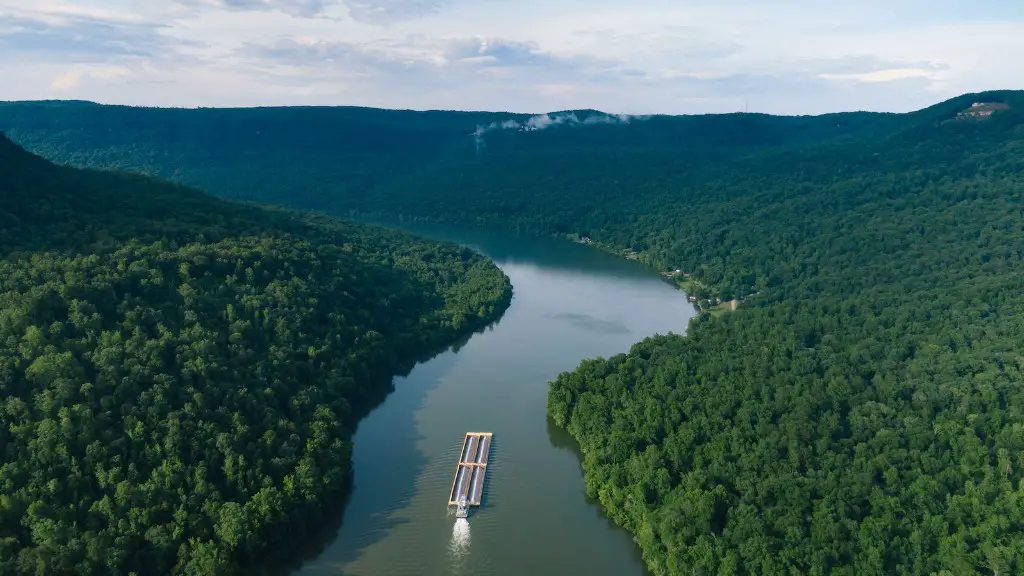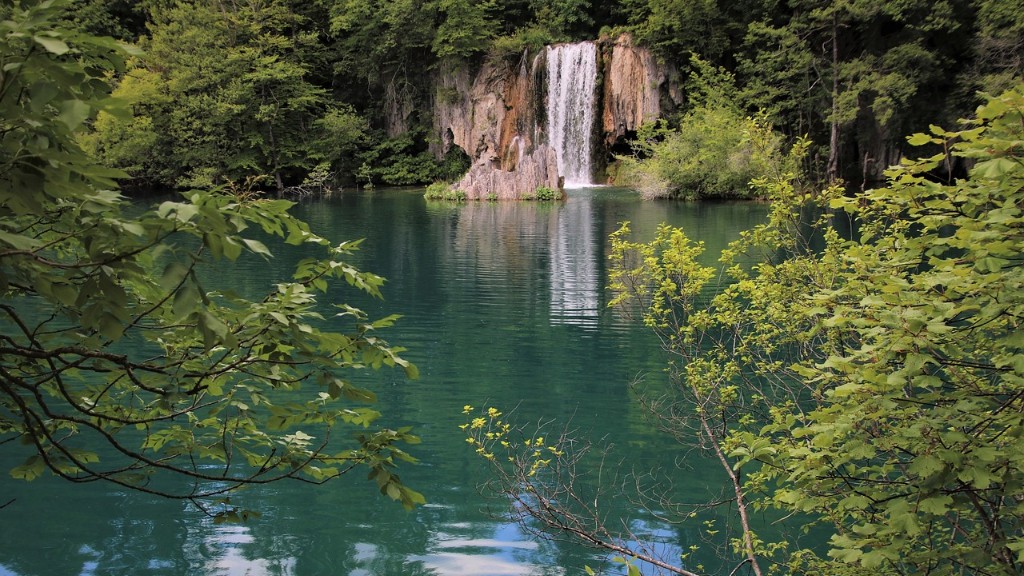The Headwaters
The source of the Mississippi River is Lake Itasca, located in northern Minnesota. This is where the river begins as a small 2.5-mile stream that eventually grows into one of the longest and most powerful rivers in the world. The total length for the Mississippi is estimated to be 2,320 miles, making it the fourth longest river on the planet. It also has the largest drainage basin in the United States, which covers an area of 1,151,000 square miles.
The water in the Mississippi River comes primarily from more than 100,000 small streams that eventually meet in this northern part of the United States. Besides the water drained through Lake Itasca, the other major tributaries of the river start in various places around the country, including the Ohio, Arkansas, and Illinois Rivers.
The Lake Itasca area of the Mississippi is a popular destination for tourists, hikers and environmental enthusiasts. The two major attractions around the lake are the Old Mill State Park and the Lake Itasca Biological Station, which is a research facility from the University of Minnesota. Both resources contribute to the many efforts to study, monitor and preserve the headwaters and the important ecosystem surrounding it.
The Dams
In the early days of the industrial revolution, the early settlers used the Mississippi as a critical resource for transportation, power, irrigation and development. To ensure the flow of the river, a variety of dams were built throughout the years. The first major one, located near St. Anthony Falls, in what is now Minneapolis, was built the early 19th century.
Today, the US Army Corps of Engineers oversees the Mississippi, monitoring water flow and maintaining the various dams that regulate it. This is done to ensure the safety of the communities in the area, as well as to avoid flooding and other damage to the land.
To this effect, various control structures that measure the flow of water have been installed throughout the river. For instance, the Red River Landing, near Baton Rouge, is managed and regulated with the help of a number of dams, such as the Old River Control Structure, the Morganza Spillway and the Grand Gulf Complex.
These structures help regulate the water and keep it at a manageable level, which is critical to the many cities and towns situated along the Mississippi.
Environmental Impact
The development along the Mississippi River and its tributaries has had an impact on the environment. The nutrient runoff from agricultural activities has caused blooms of harmful algae in certain areas, and this pollution can eventually reach the Gulf of Mexico.
Much of the wildlife found along the river is also in danger due to the destruction of fully functional and healthy habitats. For example, the Pallid Sturgeon, a highly endangered fish species, has lost much of its habitat due to the destruction of wetlands in the Lower Mississippi Valley.
Various initiatives have been implemented in recent years to reduce the impact of human activities on the Mississippi River, such as the reduction of fertilizer and pesticide use in upstream farms, as well as the preservation of wetlands.
The combined efforts of various organizations, agencies and individuals have helped improve the health of the river, making it a cleaner and better environment for wildlife and visitors alike.
Recreational Uses
The Mississippi River is an important cultural, recreational and economic resource for many communities located along its banks. Many activities take place in the river’s vicinity, such as commercial and recreational fishing, boating and sightseeing.
In addition, the river serves as an important ecological corridor, providing a route for the migration of several species of birds, including the American white pelican, bald eagle and ducks.
Finally, the Mississippi River has played an important role in the musical culture of many of the cities and towns located along its shores. Popular musicians such as Johnny Cash, Bob Dylan, Louis Armstrong and Paul Simon have all written songs about the river, and its legacy continues today.
The Weird and Wonderful
The Mississippi River has had its share of interesting stories over the years. For instance, Mark Twain’s famous novel The Adventures of Huckleberry Finn is based on his life growing up around the river.
In more recent news, the river has made headlines due to the curious phenomenon of “jumping carp”. Escaped fish from a private pond have invaded the river’s waters, and have been seen jumping out of the water and even making their way onto the decks of boats.
Finally, the river has also been used in a variety of movies and television shows, such as The Fresh Prince of Bel-Air and The Simpsons. These portrayals emphasize the fact that the Mississippi is an important cultural and recreational resource in the United States.
Politics and Economics
The Mississippi River system is a key component of the national economy, serving as the backbone for agricultural production and a critical transportation route for commercial cargo. It is estimated that 60% of all grain shipped in the United States goes via the river, and more than 250 million metric tons of cargo is carried annually.
Since its development, the Mississippi has been a contentious political and environmental issue. Various agencies, organizations and lawmakers have fought over who should manage and regulate the river. This has in part led to the variety of laws and regulations that are in place today.
In particular, this fight has been focused on the myriad ecological problems that have come up, such as erosion, contaminated runoff and the destruction of wetlands and habitat. Every country and state bordering the Mississippi has been involved in efforts to prevent these issues and establish regulations that would promote a better environment.
Conclusion
The source of the Mississippi River is an important asset to the United States, not only in terms of economic and cultural opportunities, but also in terms of its environmental value. Various agencies, organizations and citizens have come together to ensure the health and well-being of the river, from its headwaters all the way to the Gulf of Mexico.
The Mississippi continues to be a source of inspiration and opportunity for countless communities and individuals around the country, and is a powerful testament to the strength and resilience of the United States.





